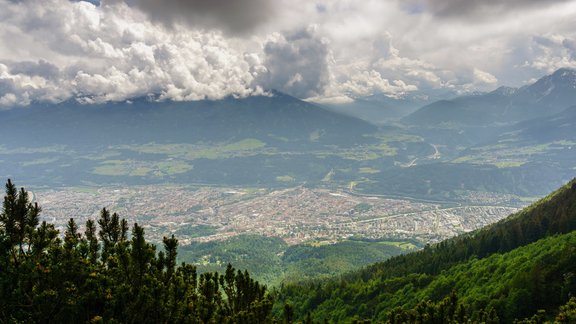Surface-atmosphere interactions in complex landscapes using high-resolution modelling (SCHiRM)
Cities in complex terrain represent regions of high population density often exposed to dangerous conditions, such as windstorms, flooding and poor air quality. The range of processes affecting weather and climate in these locations are not well captured by traditional measurement or modelling techniques. However, thanks to recent advances in technology, it is now possible to conduct high resolution large-eddy simulations (LES) for real cities, allowing detailed 3D investigations of atmospheric turbulence.
Building-resolving LES will be used to study the atmosphere in and above the alpine city of Innsbruck. A key objective is to establish a suitable modelling strategy which represents the influence of both the local building structure and the surrounding orography. Following evaluation against a range of observations, the LES will be used to investigate several open questions concerning the change in turbulence characteristics with height within and above the urban canopy layer, the importance of non-measurable quantities (e.g. advection) in surface exchange, the representativeness of observational datasets, the effect of individual buildings on displacement height and the influence of the urban surface and surrounding terrain on the atmosphere.
This project will break new ground in high-resolution modelling of cities in complex terrain, enabling the effects of the urban surface and orography to be studied together for the first time. The validated LES will be used as a virtual laboratory, providing fine-scale turbulence data that cannot be obtained from measurements and access to new information concerning the structure of the urban atmosphere.
Project leader:Helen Claire Ward (Plankl)
Funding Agencies:
FWF
Project Duration:
01/02/2022 to 28/02/2027

